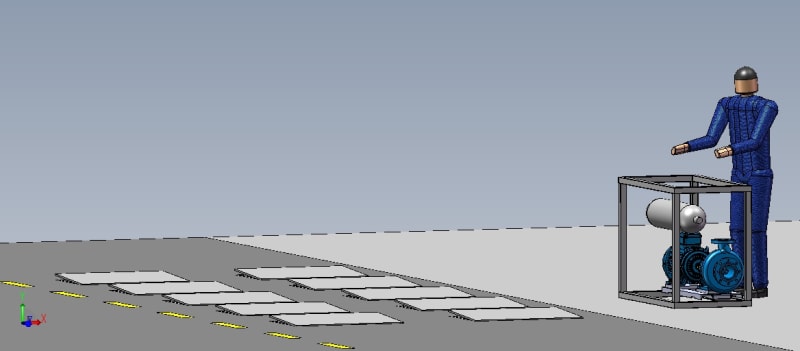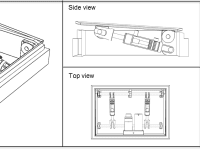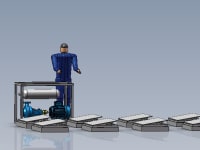Energy Intelligence aims to create a novel road-based energy-harvesting system capable of generating over 100kW of cheap, clean distributed power onsite at industrial facilities with regular heavy-duty traffic. The system will consist of an array of electro-mechanical devices embedded in stretches of road where vehicles are required to slow down or stop. Vehicles passing over the devices will depress articulating plates and transfer kinetic energy that would otherwise be lost while braking through a series of mechanical interactions to generate electricity for use onsite. In full form, these systems will self adjust in real-time to optimize performance in response to dynamic traffic and vehicle conditions. The technology significantly reduces energy costs and offsets commercial purchases and the associated harmful emissions of conventional generation sources.
All scenarios where vehicles are required to slow down or stop present opportunities to capture waste energy. Specifically, industrial and commercial facilities with regular flows of heavy-load vehicles and a need onsite for energy have been determined as ideal sites. Segments with appropriate traffic flows, energy requirements, and site conditions include port terminals, distribution centers, airports, bus and transit centers, landfills and waste material facilities, parking garages, stadiums and entertainment venues. A single system at a large port terminal could generate 130 kW of power and nearly 300 MWhs annually, at a levelized cost of 6.9 cents per kWh and 3 year payback. Each site could support several systems, scaling annual generation over 1 GWh and offsetting 750 tons CO2–equivalent.
Road-based energy-harvesting solutions create a unique opportunity to make use of existing real estate (roads) and a significant and currently untapped energy source. The market is nascent because no solution exists to cost-efficiently harness this waste energy at scale. Piezoelectric plates are unobtrusive (entirely submerged) but generate little power. Similarly, magnetic induction technologies are space-inefficient and produce too little power to be economically viable on roads. More mechanical solutions suffer from overly complex design or an inability to respond to varying roadway and traffic conditions. Designs based on gear mechanisms, rotating shafts, and ratchet-to-cog drives have many moving parts and, as a result, have many failure points and are not cost-efficient. Peristaltic devices and other combined hydro-mechanical systems require complex and costly installation and have trouble meeting durability requirements of road environments. Virtually all attempts in this field have targeted low-power or small-scale generation applications, which limits the core technologies that can be used and constrains the feasible sites that could utilize the technology. Furthermore, alternatives at targeted sites are limited because of space, climate, or energy requirements. For example, ports do not have sufficient space for large solar installation or wind turbines. Conventional distributed generation systems such as engine-based solutions, are often powerful and efficient, but are expensive and produce more emissions.
Energy Intelligence’s system simplifies design by combining the functionality of several parts into one, optimizing system sizing based on economic efficiency and commercial potential, and maximizing compactness and durability to meet operational requirements, resulting in unparalleled economics.
Like this entry?
-
About the Entrant
- Name:Daniel Shani
- Type of entry:teamTeam members:Daniel Shani, Brian Greenfield, Smaro Panagiotidou
- Software used for this entry:SolidWorks
- Patent status:patented








